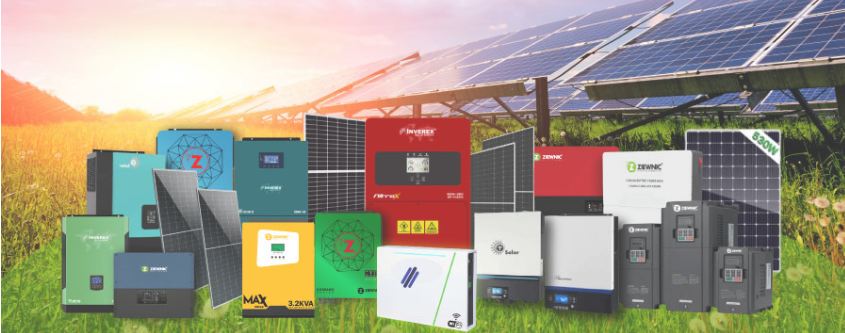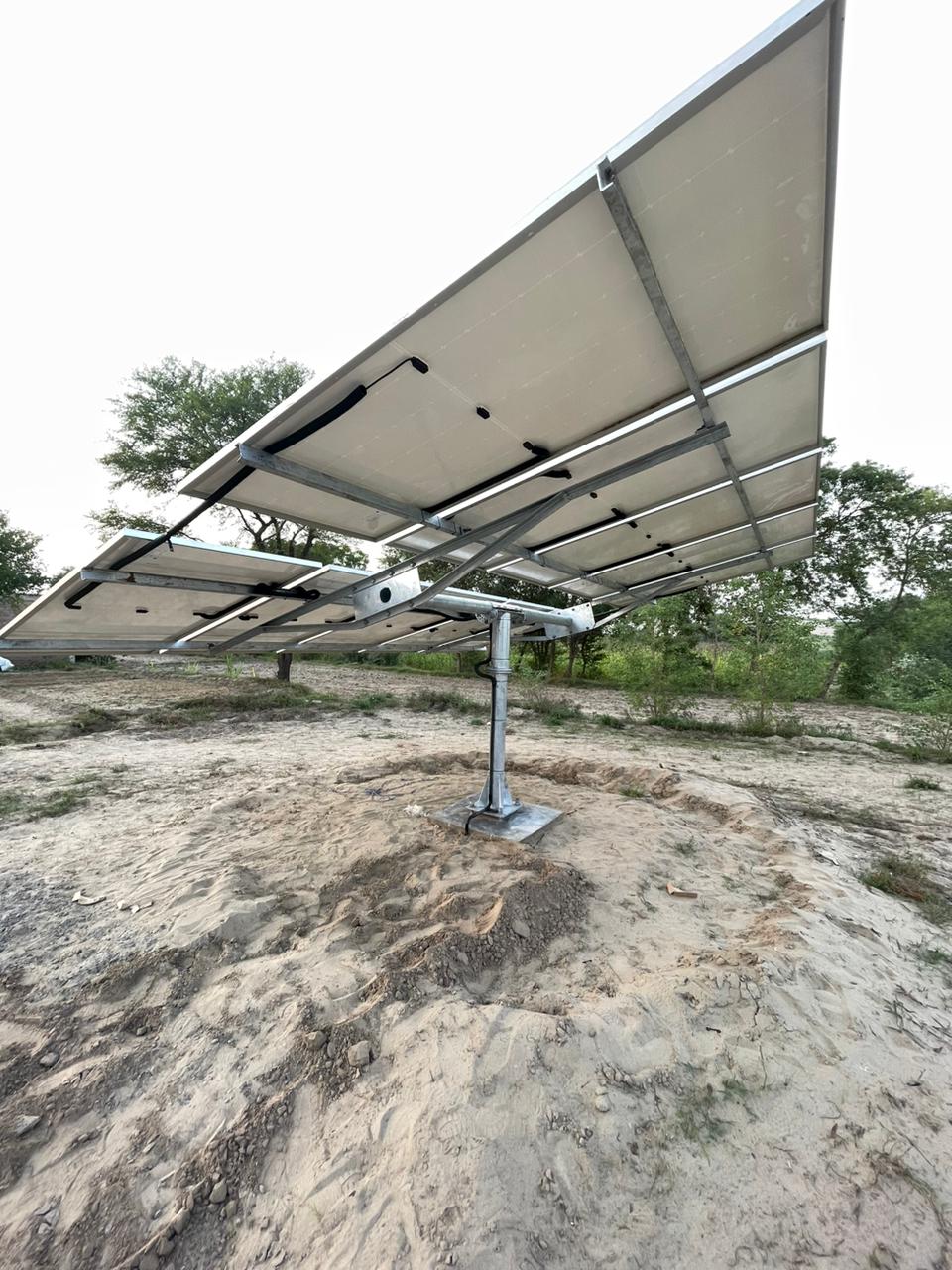Solar Panels

The usage of Best Solar Panels in Pakistan is on the rise as it is the most effective alternative to conventional energy. In the wake of the energy predicament, a number of consumers belonging to all sectors have switched to solar panel solutions. These sustainable solar systems ensure energy conservation which makes them a smart option for users. Solar solutions are an automatic choice for clean and renewable energy in our country because it is blessed with sunlight throughout the year.
Introduction and History of Solar Panels
Solar panels are devices that use the photovoltaic effect to convert sunlight into electricity. Solar panels have been around since the nineteenth century when French physicist Alexandre Edmond Becquerel discovered the photovoltaic phenomenon in 1839. When certain materials are exposed to light, this effect causes an electric current to be generated. However, practical solar cells were not produced until the mid-twentieth century.
Bell Laboratories introduced the first silicon-based solar cell with an efficiency of roughly 6% in 1954. Solar panel technological developments have resulted in higher efficiency and lower costs over the years. Solar panels are now widely employed as a clean and sustainable energy alternative all over the world.
How do Solar Panels Work?
Solar panels are made up of several solar cells that are linked together and encased in a protective coating. Silicon, a semiconductor material, is commonly used in the manufacture of these solar cells. When sunlight strikes the solar cells, it excites the electrons in the silicon atoms, forcing them to migrate and so producing an electric current.
The solar cells are sandwiched between two layers of glass or transparent plastic, with the bottom layer serving as a back contact. The upper layer lets sunlight in while protecting the cells from outside factors. The bottom layer collects and transports the generated electricity from the solar panel. The electricity generated by solar panels is produced in the form of direct current (DC). An inverter is used to convert DC electricity into alternating current (AC) electricity, which is utilized in most homes and businesses.

Best Brands For Solar Panels In The World
Several renowned brands are well-known for producing high-quality solar panels. Below are the details of some of the world’s top solar panel brands:
SunPower:
SunPower is a renowned solar panel manufacturer noted for producing highly efficient and dependable panels. They use cutting-edge technology to attain some of the industry’s greatest efficiency rates.
LG Solar:
LG Solar is well-known for its solar panels’ durability and performance. They are dedicated to producing high-quality products that are supported by considerable research and development.
JinkoSolar:
JinkoSolar is one of the world’s largest solar panel producers, offering a diverse selection of dependable and cost-effective panels. They prioritize innovation and have constantly upgraded their product offerings.
Canadian Solar:
Canadian Solar is a well-known brand known for its high-quality panels and considerable industry experience. They provide a wide range of solar panels ideal for a variety of purposes.
Trina Solar:
Trina Solar is a market leader in integrated solar energy solutions. They provide efficient and dependable panels that have received praise for their efficiency and durability.
Which Solar Panels Are Most Efficient in Pakistan?
When it comes to determining the most efficient solar panels in Pakistan, several factors need to be considered, such as the conversion efficiency, temperature coefficient, and overall performance in different environmental conditions. The efficiency of solar panels refers to the ability to convert sunlight into usable electricity.
Types of Solar Panels in Pakistan
The two most common types are Monocrystalline and Polycrystalline. Their PV solar plates feature crystalline silicon cell technology which differs in both types. These counterparts also have some other distinctive variables which give a better overview and influence users’ choices. It includes aesthetics, volume, construction, cost, space efficiency, performance in certain environments, and purity of silicon used in the making. For a better understanding, each of these two types is reviewed in detail below:
Monocrystalline Solar Panels
Monocrystalline solar panels are recognized for their high-efficiency rates. Due to their construction using single-crystal silicon, they can achieve higher power outputs and perform well under various weather conditions. Monocrystalline panels typically have efficiency rates ranging from 15% to 20%. Monocrystalline solar panels are considered the premium solar product out of these two with relatively high efficiency. These panels are created based on the most developed technology being used for ages. Resilient and reliable, the main characteristics of monocrystalline solar panels are explained here under.
PERC (Passivated Emitter Rear Cell) Solar Panels
PERC solar panels have gained popularity for their enhanced efficiency. These panels feature a rear passivation layer that helps capture more sunlight and increase the overall electricity generation. PERC solar panels can offer efficiency rates in the range of 18% to 22%.
Construction
As obvious by its name, monocrystalline solar panels are made from single-crystal silicon. A method termed ‘Czochralski’ is adopted for the formation of large cylindrical-shaped silicon ingots using the drawn technique. These ingots are then sliced from the four sides to make silicon wafers.
Aesthetic
The monocrystalline panels can be distinguished easily from the cut-out edges of the ingots. Other prominent visual highlights of these solar panels are even color and uniform look.
Performance Efficiency
Since the highest grade silicon is used during the construction of monocrystalline solar panels, they yield the highest power outputs. The solar cells composed of single-crystal silicon allow more space for electrons to generate a flow of electricity. On average, this type of solar panel has an efficiency rate of 15-20%.
Space Efficiency
For solar panel installations, the availability of adequate space is highly desirable for both options; on the roof or on the ground. The monocrystalline solar panels are space efficient and require lesser space as compared to their other counterpart.
Longevity
These solar panels are given a 25-year warranty by the manufacturers which is considered ideal. However, most of the time it lasts much longer beyond the given period.
Performance in Extreme Climatic Conditions
Monocrystalline solar panels tend to perform better in low-light conditions or warm weather as compared to other types.
Polycrystalline Solar Panels
Polycrystalline solar panel also known as multi-crystalline solar panels have comparatively newer technology and was first introduced in 1981. Unlike monocrystalline panels, the Czochralski process is not followed for the making of these panels. Following is a quick review of polycrystalline solar panels.
Construction
Multicrystalline solar panels are developed when many fragments of raw silicon are melted and then cooled down. After cooling, it is sliced into square wafers to form the panel.
Aesthetic
Contrary to monocrystalline panels, these solar panels have perfectly rectangular edges. The solar cells in these panels don’t have a uniform appearance as they tend to look in the monocrystalline panels. However, these panels can be easily identified with their distinctive color and prominent graining or speckled outlook.
Performance Efficiency
Polycrystalline solar panels have performance efficiency close to the monocrystalline ones with an efficiency rate ranging from 14-16% on average. As there are many silicon crystals in each solar cell, electrons can’t move much freely resulting in slightly less efficiency.
Space Efficiency
Polycrystalline solar panels can be a suitable option if enough space is available as these panels require larger space. If there is any limitation or space constraints, these panels won’t be a viable choice.
Longevity
As far as longevity is concerned, the polycrystalline solar panels come up with 25 years warranty which is good enough. If maintenance is maintained over time, more likely this time duration can exceed.
Performance in Extreme Climatic Conditions
The performance of polycrystalline solar panels suffers in certain climate conditions like snowy weather or low-light situations. As they tend to have lesser heat tolerance, their performance drops as the temperature rises to the peak.
Monocrystalline Solar Panel vs Polycrystalline Solar Panel
Following is a brief head-to-head comparison of these two types of solar panels on some key metrics to help you to make the right choice:
| Monocrystalline solar panels | |
| Technology | Single-crystal Silicon Solar Cell |
| Cost | More expensive |
| Efficiency | More efficient |
| Space Efficiency | Requires less space |
| Appearance | Blackish hue, Uniform solar cells, Aesthetically pleasing |
| Longevity | 25+ years, including 25 years Warranty by Manufacturers |
| Major Brands | Canadian Solar, Sunpower, JA Solar, Longi SOlar |
| Polycrystalline solar panels | |
| Technology | Multi-crystalline Solar Cell |
| Cost | Lesser in cost |
| Efficiency | Slightly less efficient |
| Space Efficiency | Requires more space |
| Appearance | Bluish hue, Speckled or Grained |
| Longevity | 25+ years, including 25 years Warranty by Manufacturers |
| Major Brands | Hanwha, Kyocera, Hyundai, SolarWorld, Trina |
Maintenance of Solar Panels:
Proper maintenance is required to guarantee that solar panels operate well and last as long as possible. Here are some suggestions for upkeep:
Cleaning
Clean the surface of the solar panels regularly to enhance sunlight absorption. Remove any dirt, dust, or debris using a soft brush or a non-abrasive sponge. The use of harsh chemicals or abrasive materials that can harm the panels should be avoided.
Check for Shading
Inspect the area around the solar panels regularly to verify there are no objects that cast shadows on them. Shading can greatly lower the output of the panel, thus cutting trees or eliminating any items that block sunlight is required.
Inspect for Damage
Inspect the panels regularly for any evidence of physical damage, such as cracks or fractures. Contact a professional for repairs or replacement if any damage is discovered.
Monitor Performance
Keep track of the performance of the solar panels by measuring the amount of electricity produced. If you detect a large decline in output, it could signal a problem that needs to be addressed.
Professional Maintenance
Consider having a qualified technician do periodic maintenance checks. They can inspect, clean, and maintain the entire solar panel system.
Solar Inverters

Top Notch Solar Inverters In Pakistan
Buy best Solar Inverters in Pakistan from Smartech Solutions and integrates with solar system. We offer top solar inverters brands in pakistan in terms of performance consistency to the turnkey solar systems offered to our clients. A number of options are available for solar inverters in the market today. These brands are mentioned below with respect to types of solar system.
List of Best Solar Inverters in Pakistan:
On-grid Solar Inverters in Pakistan
- GOODWe Solar Inverters
- Solis Solar Inverters
- ABB Solar Inverters
- Huawei Solar Inverters
- Fronius Solar Inverters
- SMA Solar Inverters
- Suntwin Solar Inverters
- Infini Solar Inverters
- Tranergy Solar Inverters
Hybrid Solar Inverters in Pakistan
- GOODWE Solar Inverters
- Infini Solar Inverters
Off-Grid Solar Inverters in Pakistan
- Axpert Solar Inverters
- Infini Solar Inverters
Solar Structures


We deal in all kind of solar structures
Solar Trackers for tubewells
L2 and L3 roof mounted structures
Elevated structures